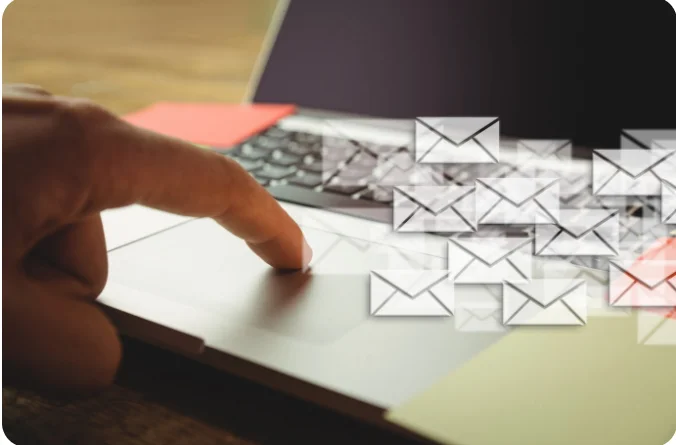In today’s fast-paced digital landscape, many businesses focus heavily on online strategies like email campaigns and social media ads. While these methods are effective, they are also saturated, making it difficult to grab your audience’s attention. That’s where traditional marketing—with a modern twist—steps in. Direct mail marketing, especially when powered by automation and technology, offers a fresh, tangible way to reach customers. Leveraging a direct mail tool and integrating a postcard API can take your outreach strategy to a whole new level.
In this blog, we’ll explore how these technologies work, their benefits, and how businesses can use them to enhance customer engagement and ROI.
The Resurgence of Direct Mail in a Digital World
Contrary to popular belief, direct mail isn’t dead—it’s evolving. With increased email fatigue and ad blockers becoming more common, direct mail cuts through the noise by providing a physical touchpoint in a digital world. It’s no surprise that businesses are rediscovering the value of sending personalized postcards, brochures, and letters directly to consumers’ mailboxes.
The response rates for direct mail are significantly higher than those for digital marketing. According to a Data & Marketing Association (DMA) report, direct mail achieves a response rate of about 4.4%, compared to just 0.12% for email. The real magic happens when direct mail merges with automation.
What Is a Direct Mail Tool?
A direct mail tool is a software platform that automates the process of designing, printing, and sending physical mail. These tools are integrated with customer databases and CRM systems, making it easy to launch targeted campaigns with minimal effort. With the right direct mail automation software, businesses can trigger mailings based on customer behavior, purchase history, or other personalized factors.
Here are a few features that a good direct mail tool typically includes:
- Template Design: Drag-and-drop interfaces to create postcards or letters.
- Data Integration: Syncing with CRMs like Salesforce or HubSpot.
- Mail Tracking: Real-time updates on delivery status.
- Analytics: Campaign performance metrics and ROI tracking.
- Personalization: Variable data printing for individual-level targeting.
Incorporating a direct mail tool into your marketing stack enables you to create data-driven mail campaigns that operate just like digital ones—only with the added benefit of physical engagement.
The Role of Postcard APIs in Automation
Imagine being able to send a customized postcard to a customer automatically after they abandon their online cart or complete a purchase. This is made possible through the use of a postcard API.
A postcard API is a developer-friendly interface that allows businesses to send printed postcards via code. It connects your application or website to a printing and mailing service that takes care of fulfillment. For example, an e-commerce site could use a postcard API to send out thank-you notes or promotional offers after a transaction.
Integrating a postcard API enables:
- Scalability: Send hundreds or thousands of postcards with a single API call.
- Dynamic Content: Customize text, images, and offers based on user data.
- Automated Triggers: Send mail automatically based on user actions or CRM workflows.
- International Reach: Mail to customers across borders without logistical hurdles.
For developers and marketers alike, postcard APIs represent a low-effort, high-impact method to reach users with tactile, memorable messages.
Use Cases Across Industries
- E-commerce:
Send postcards with discount codes to customers who haven’t made a purchase in a while. Trigger thank-you notes after orders are delivered. - Real Estate:
Agents can mail property listings, open house invites, or personalized market updates to potential buyers. - Healthcare:
Clinics and hospitals can automate appointment reminders or wellness tips to patients through the mail. - Education:
Schools and institutions can mail brochures, application reminders, or event invitations. - Nonprofits:
Organizations can send donation appeals or thank-you notes to donors in a personalized, heartfelt manner.
Advantages of Combining Direct Mail Tools and Postcard APIs
When used together, direct mail tools and postcard APIs create a powerful synergy. Here’s how:
- Full Automation: No need to manually design or send anything. Everything from design to delivery is handled through automation.
- Cost Efficiency: Batch mailing and automation reduce operational costs and human errors.
- Faster Turnaround: Design, print, and ship within 24-48 hours.
- Personalization at Scale: Tailor messages for each recipient without manual intervention.
- Real-Time Tracking: Know exactly when your mail is printed, sent, and delivered.
Whether you’re a startup or an enterprise-level organization, this combination allows for scalable, targeted outreach that blends digital convenience with physical impact.
Metrics That Matter
Measuring the effectiveness of your direct mail campaigns is just as critical as sending them. Most advanced platforms offer built-in analytics that track:
- Delivery confirmation
- Open rates (when combined with QR codes or personalized URLs)
- Conversion rates
- ROI and cost per acquisition
Using these insights, you can iterate and optimize future campaigns, making your direct mail smarter and more effective over time.
How to Get Started
- Choose the Right Platform: Look for a provider that offers both a user-friendly direct mail tool and a developer-friendly postcard API.
- Integrate with Your Systems: Connect the platform to your CRM, website, or app.
- Design Templates: Use pre-built or custom templates tailored to your branding.
- Set Up Triggers: Automate sending based on user behavior or marketing campaigns.
- Launch & Monitor: Run your campaign and monitor results in real time.
Final Thoughts
In an era where digital noise is at an all-time high, tangible, thoughtful communication stands out. Businesses that incorporate a direct mail tool and a postcard API into their marketing strategy can achieve higher engagement, better customer retention, and increased ROI. These tools don’t just streamline operations—they enhance the overall customer experience.
As automation continues to shape the future of marketing, the brands that merge the physical with the digital will lead the way. So whether you’re sending 100 or 10,000 postcards, let automation do the heavy lifting while your message makes a lasting impact.
